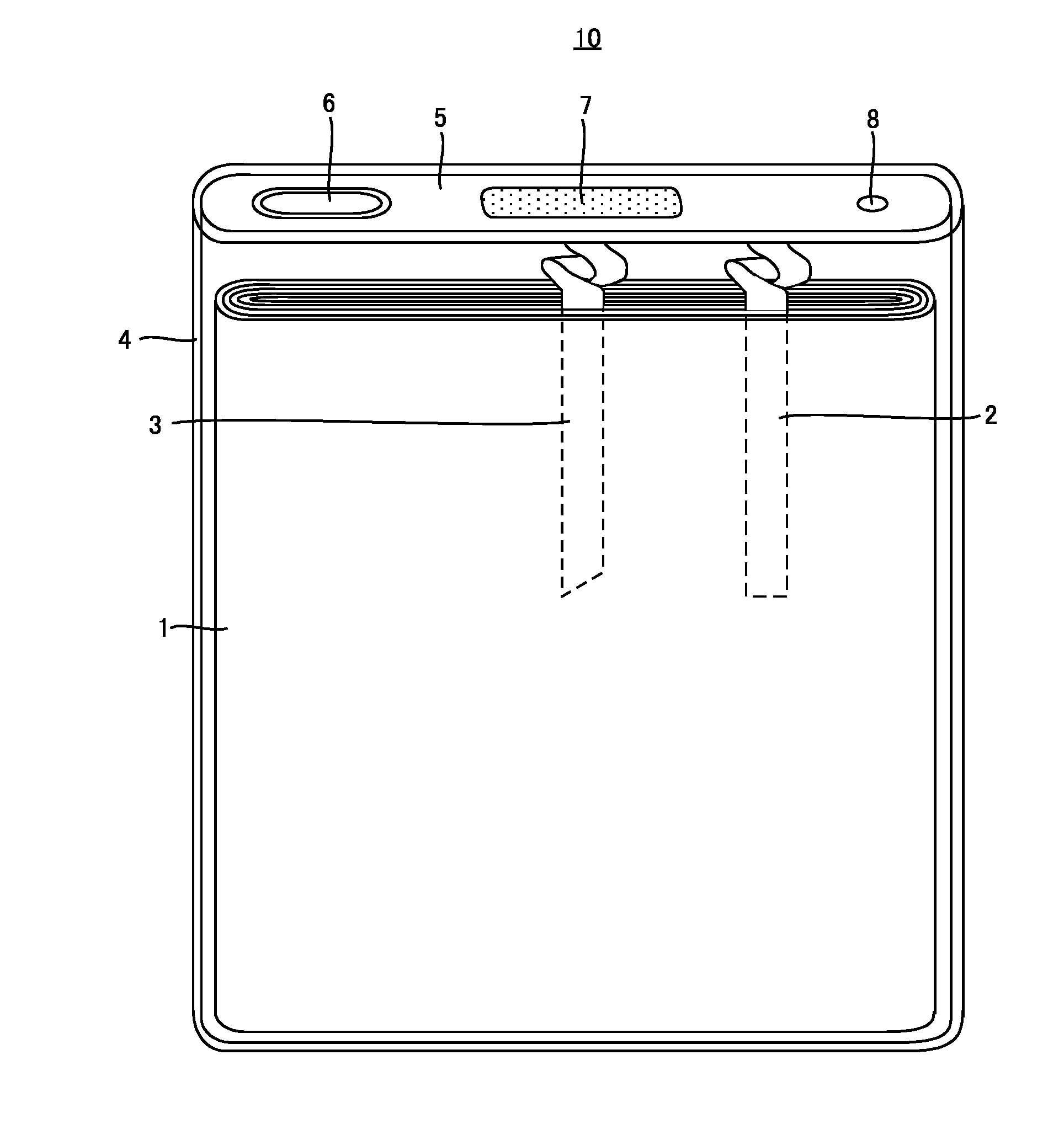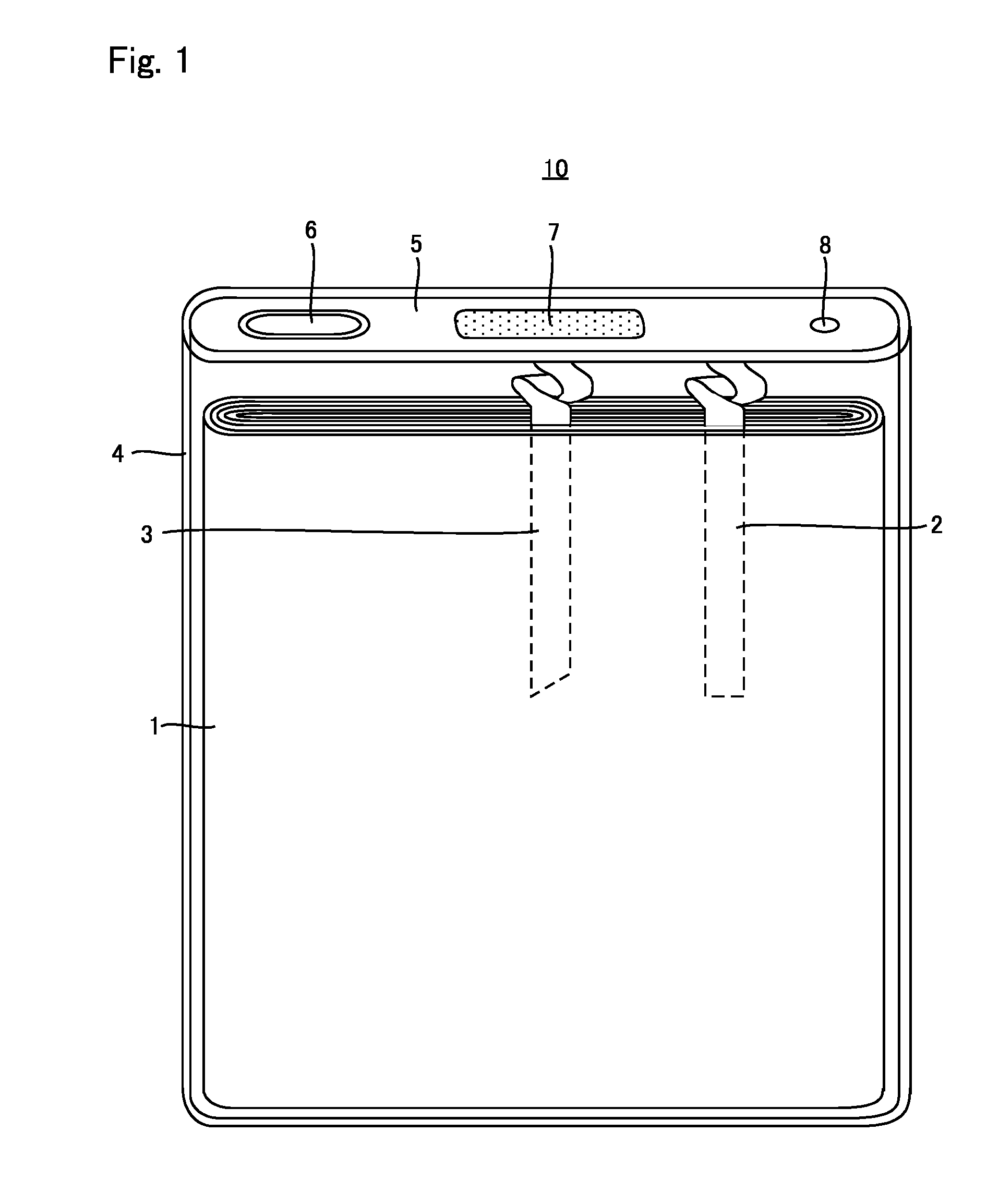Lithium-ion secondary battery
a secondary battery and lithium-ion technology, applied in the direction of cell components, sustainable manufacturing/processing, final product manufacturing, etc., can solve the problems of increasing the number of production steps, difficult non-destructive identification of batteries, increasing the unit cost of batteries, etc., and achieve the effect of improving traceability
- Summary
- Abstract
- Description
- Claims
- Application Information
AI Technical Summary
Benefits of technology
Problems solved by technology
Method used
Image
Examples
Embodiment Construction
[0026]An embodiment of the present invention will now be described in detail referring to the drawings. The same or corresponding parts are labeled with the same numerals throughout the drawings, and their description will not be repeated.
[0027]The present invention is suitably employed in any of the known lithium-ion secondary batteries, i.e. rectangular batteries, cylindrical batteries and laminated batteries.
[0028]FIG. 1 is a perspective view of a lithium-ion secondary battery according to an embodiment of the present invention. In FIG. 1, the casing 4 is shown with its interior being visible.
[0029]Referring to FIG. 1, a lithium-ion secondary battery 10 according to the embodiment of the present invention is a rectangular battery including: a jelly roll 1, a positive electrode tab 2, a negative electrode tab 3, a casing 4, a lid 5, a vent 6, a terminal 7, and a fill port 8.
[0030]The jelly roll 1 is made by rolling the positive and negative electrodes with an interposed separator ...
PUM
| Property | Measurement | Unit |
|---|---|---|
| density | aaaaa | aaaaa |
| density | aaaaa | aaaaa |
| density | aaaaa | aaaaa |
Abstract
Description
Claims
Application Information
 Login to View More
Login to View More - R&D
- Intellectual Property
- Life Sciences
- Materials
- Tech Scout
- Unparalleled Data Quality
- Higher Quality Content
- 60% Fewer Hallucinations
Browse by: Latest US Patents, China's latest patents, Technical Efficacy Thesaurus, Application Domain, Technology Topic, Popular Technical Reports.
© 2025 PatSnap. All rights reserved.Legal|Privacy policy|Modern Slavery Act Transparency Statement|Sitemap|About US| Contact US: help@patsnap.com



